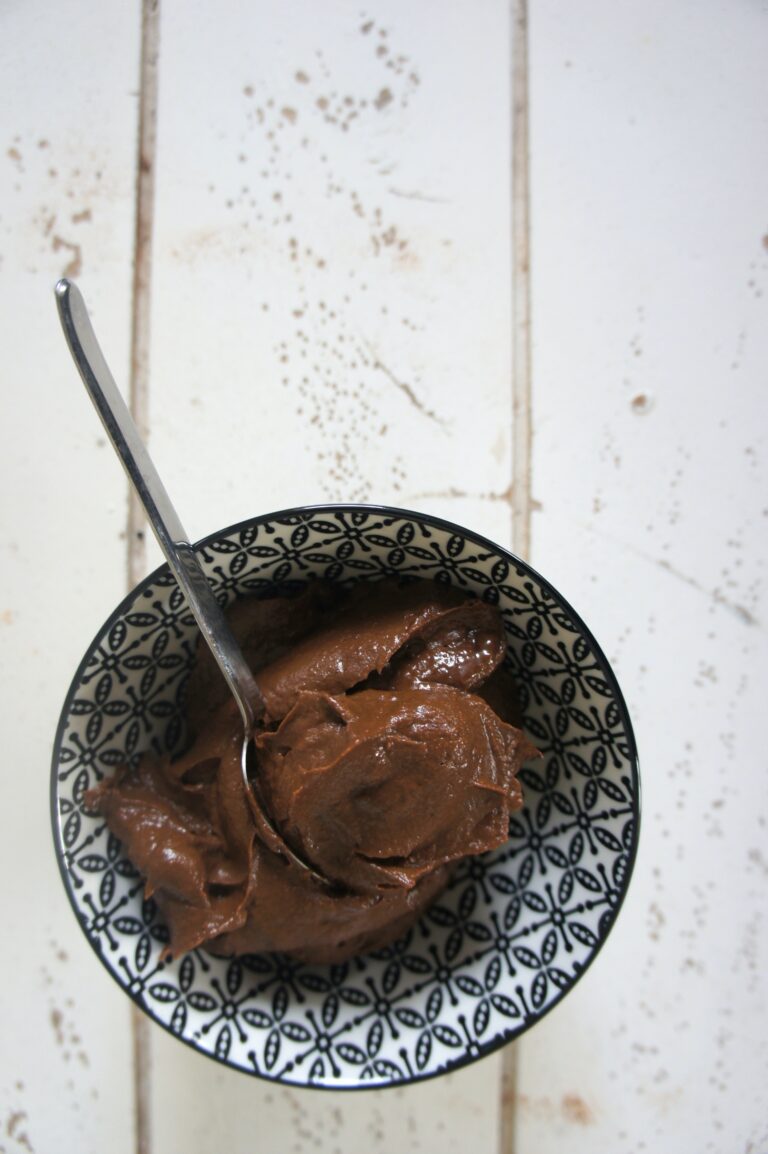
Mascarpone, the Italian cream cheese known for its rich, creamy texture, is a versatile ingredient in both savory and sweet dishes. But what happens when you have more mascarpone than you can use? Can you freeze mascarpone cheese? Does mascarpone freeze well? In this blog post, we’ll explore the ins and outs of freezing mascarpone cheese, from the basics of how to freeze it to using thawed mascarpone in your favorite recipes.
What Is Mascarpone
Mascarpone is a type of Italian cream cheese, renowned for its rich, creamy texture and mildly sweet flavor. Unlike traditional American cream cheese, mascarpone has a higher fat content, which contributes to its lush, velvety consistency. This cheese is made from cream that is thickened by the addition of citric acid or tartaric acid, after which it is drained.

How is Mascarpone used?
Mascarpone is a staple ingredient in various Italian desserts, most notably Tiramisu, where it plays a crucial role in creating the dessert’s signature creamy layers. Beyond desserts, it’s also used in savory dishes. Its creamy nature makes it an excellent addition to sauces, giving them a rich and smooth texture. It can be used in place of cream in recipes to add a more luxurious mouthfeel. Due to its high fat content and delicate nature, mascarpone is best enjoyed fresh.
Using Mascarpone in Recipes to Prevent Waste
Using mascarpone in recipes is an excellent way to prevent waste and enjoy its rich, creamy texture. Here are some ideas for incorporating mascarpone into various dishes:
- Desserts: Mascarpone is famous for its role in Tiramisu, but it’s also great in other desserts. Use it in cheesecakes, as a filling for pastries, or mix it with fruit for a simple, creamy dessert.
- Pasta and Risotto: Stir mascarpone into pasta sauces or risottos for a luxurious creaminess. It pairs well with tomato-based sauces and can be used to create a rich, Alfredo-like sauce.
- Savory Spreads and Dips: Mix mascarpone with herbs, garlic, or sun-dried tomatoes for a flavorful spread or dip. It’s perfect for crackers, bread, or as a dip for vegetables.
- Baking: Mascarpone can replace or complement cream cheese in baking. Add it to muffin, cake, or cookie recipes for a moist, tender texture.
- Soups and Stews: A dollop of mascarpone can enrich soups and stews, adding a creamy element without overwhelming the dish.
- Breakfast Dishes: Use mascarpone in breakfast recipes like stuffed French toast, pancakes, or as a topping for oatmeal and granola bowls.
- Frosting and Fillings: Mascarpone makes for a less sweet, creamier alternative to traditional frosting. Use it in layer cakes, cupcakes, or as a filling in crepes.
- Salad Dressings: Whisk mascarpone into salad dressings for a creamy and tangy flavor. It pairs well with balsamic vinegar and olive oil.
- Frozen Treats: Blend mascarpone with fruits and freeze it for a homemade ice cream or frozen yogurt alternative.
By incorporating mascarpone into various dishes, you can not only add a touch of luxury to everyday meals but also minimize food waste effectively.

Understanding the Shelf Life of Mascarpone
Understanding the shelf life of mascarpone is important for both its quality and food safety. Mascarpone is a delicate cheese with a high fat content, which influences its shelf life and storage requirements.
Proper Storage Conditions for Mascarpone
To properly store mascarpone and maintain its quality, keep it refrigerated at or below 40°F (4°C) in its original container. If opened, transfer the cheese to an airtight container or tightly wrap it in cling film or plastic wrap to prevent it from absorbing odors and drying out.
Refrigerated Shelf Life
When kept in the refrigerator, fresh mascarpone typically has a shelf life of about 4 to 6 days after opening. It’s important to keep it in its original container, sealed tightly, to maintain its quality and prevent it from absorbing other flavors and odors in the fridge.
Storing Unopened Mascarpone
If unopened and stored properly in the refrigerator, mascarpone can last until the date printed on the package, which is usually several weeks from the date of purchase.
Storing Opened Mascarpone
Once opened, mascarpone should be stored in the refrigerator. Transfer it to an airtight container or tightly wrap it in cling film or plastic wrap to prevent it from drying out and absorbing other flavors. Ideally, use opened mascarpone within 4 to 6 days to ensure freshness and quality.
How to Determine if Mascarpone is Spoiled
To determine if mascarpone is spoiled, check for any off-putting smell, unusual taste, changes in texture such as becoming grainy or watery, and any signs of mold or discoloration. If you notice any of these signs, it’s best to discard the mascarpone to avoid the risk of foodborne illness.

How To Freeze Mascarpone Correctly
Freezing mascarpone cheese is a fantastic way to extend its shelf life. While the creamy texture of mascarpone might change slightly post-freezing, it can still be used in various recipes. Here’s how to freeze it properly:
- Airtight Container: Place the mascarpone in an airtight container. This step is crucial to prevent freezer burn and absorb odors from other foods in your freezer.
- Cling Film: For added protection, you can wrap the container in cling film or plastic wrap.
- Label: Don’t forget to label the container with the freezing date. Mascarpone can be stored in the freezer for up to four months.
How Long Can You Freeze Mascarpone
You can freeze mascarpone for up to four months. While freezing can extend its shelf life, it may slightly alter the texture, making it grainier once thawed. However, it remains safe to eat and suitable for use in cooked dishes and baking where the texture change is less noticeable.
How Do You Defrost Mascarpone Cheese
When you’re ready to use your frozen mascarpone, defrost it in the refrigerator, not at room temperature. This gradual thawing helps maintain its texture.
Tip for After Defrosting
Once defrosted, the mascarpone might appear a bit grainy or separated. Give it a vigorous stir to revive its creamy texture. This makes it ready for your recipes.
Can You Refreeze Mascarpone Cheese
It’s not recommended to refreeze mascarpone. Refreezing can further alter its texture and potentially affect the taste and safety.
How Do You Use Frozen Mascarpone Cheese
Using frozen mascarpone cheese involves a few steps:
- Thawing: First, defrost the mascarpone in the refrigerator. This slow thawing process helps maintain its creamy texture as much as possible.
- Stirring: After thawing, mascarpone may separate or become grainy. Give it a vigorous stir to reintegrate the fats and liquids, helping to restore some of its original creaminess.
- Cooking and Baking: Frozen and thawed mascarpone works well in cooked recipes like pasta sauces, soups, and baking, where its slightly altered texture won’t be as noticeable.
- Desserts: Use it in desserts like cheesecakes or tiramisu. While the texture might be slightly different, the flavor remains intact.
- Avoid Raw Uses: It’s best not to use thawed mascarpone in recipes where it’s eaten raw or where the creamy texture is crucial, as the freezing process can change its consistency.
Remember, frozen and thawed mascarpone is still versatile and can add richness and flavor to a variety of dishes.

Other Helpful Freezer Guides
- How to Freeze Jello
- How to Freeze Pulled Pork
- How to Freeze Pork Pies
- How to Freeze Bean Sprouts
- How to Freeze Kiwi
- How to Freeze Bell Peppers
- How to Freeze Chorizo
- How to Freeze Yogurt
- How to Freeze Ricotta Cheese
- How to Freeze Salami
- How to Freeze Ricotta
- How to Freeze Coconut Cream
- How to Freeze Cantaloupe
Final Thoughts on Freezing Mascarpone
In summary, you can freeze mascarpone cheese effectively if you use an airtight container, protect it from freezer burn, and give it a good stir after thawing. Remember, while frozen mascarpone may not be ideal for fresh, uncooked recipes due to texture changes, it’s perfect for cooked dishes, baking, and of course, a delightful mascarpone cheesecake. With these tips, you can enjoy your mascarpone anytime you need it!

Christopher is a food and lifestyle expert, recipe developer and the content creator behind May Eighty Five. With years of experience in the kitchen, he also shares tips, tricks and how to’s that he has learnt over the years. Every week, he shares quick, simple and mostly healthy recipes along with some home and entertaining tips. You will find flavorful cocktails, delicious appetizers, tasty mains and some indulgent desserts. As a home decor enthusiast, he also likes to share simple DIY projects and simple tips for a beautiful home.








2 Comments